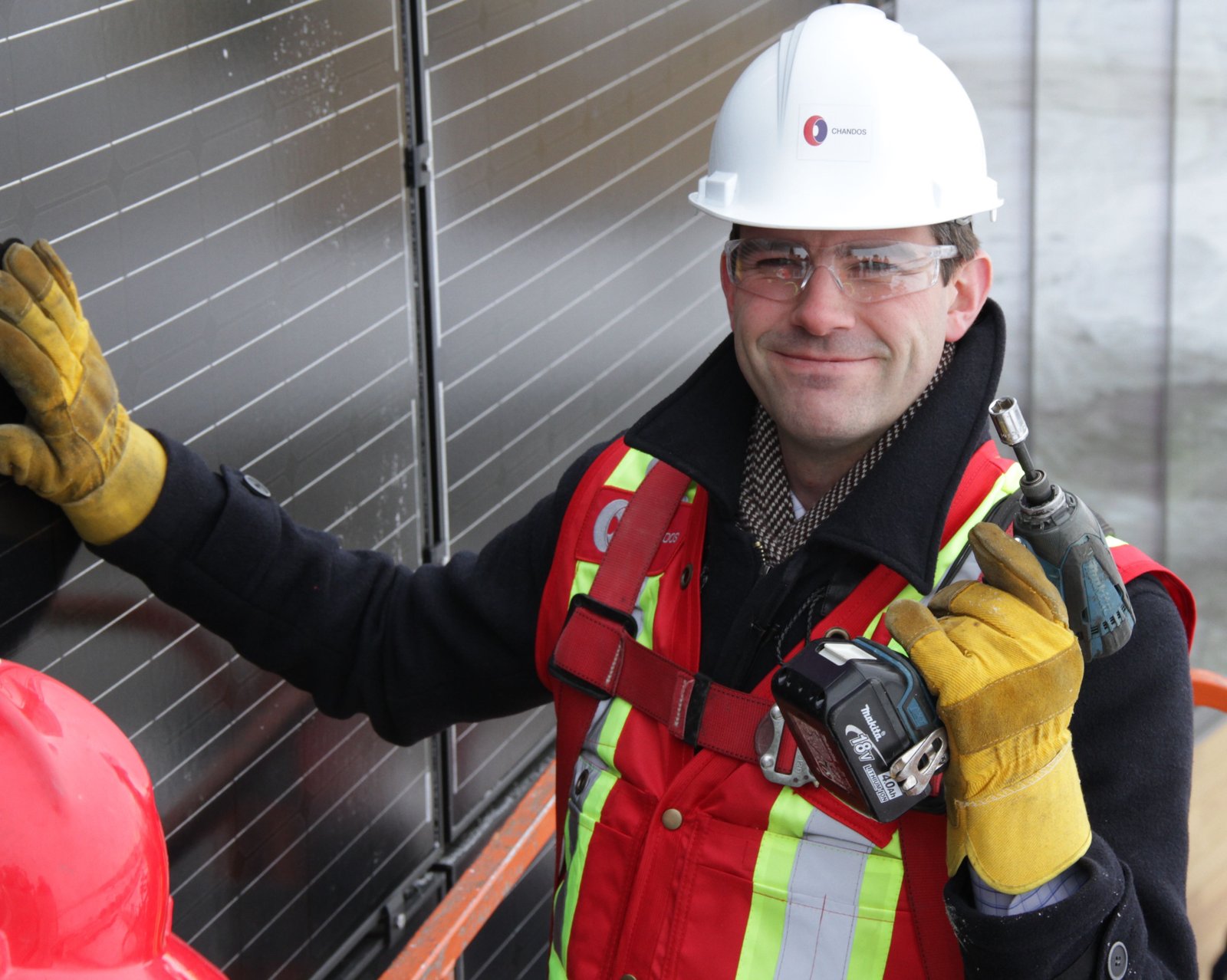By David Dodge & Dylan Thompson

Climate change is often portrayed as this giant, fuzzy, future threat that’s hard to relate to, but the mayor of Edmonton, Don Iveson, brings the idea home: “We don’t have to look much further than the disastrous Calgary floods of 2013, the increasingly intense summer storms we now face, or the growing legions of potholes caused by Edmonton’s more frequent freeze and thaw cycles. Like it or not, the problem is at our doorstep.”
That’s why it was an important first step when in April 2015 Edmonton city council unanimously passed the Edmonton Community Energy Transition Strategy. Iveson supported the plan and he is a big believer in the capacity of local governments to get stuff done on climate change. And because of several recent progressive electoral victories, there has never been a better chance to get support from other levels of government.

Don Iveson is the mayor of Edmonton. He supported the Edmonton Community Energy Transition Strategy which Edmonton city council unanimously passed.
“What’s different is that we have provincial and federal governments who are not denying that climate change is anthropogenically connected; they’re prepared to go to Paris and talk about what we’re going to do. But if they want to be successful, they’re going to need to plug into specific and achievable and measurable and cogent local strategies, which we’ve provided here,” says Iveson.
Jim Andrais is the program manager for environmental policy for the City of Edmonton and he says the Community Energy Transition Strategy is a necessary step designed to protect the quality of life in Edmonton from climate change, air quality and higher energy price risks.
“What we’re talking about here is an investment,” says Andrais. “The actual savings to Edmontonians who make these investments will total $2.5 billion dollars between 2018 and 2035. That means $2.5 billion dollars in Edmontonians’ pockets that wouldn’t be there otherwise.”
Between 2018 to 2021 the strategy estimates its plan will cost $25 to $30 million a year to achieve three specific targets by the year 2035:
- reduce greenhouse gas emissions by 35 per cent
- reduce per person energy consumption by 25 per cent
- produce 10 per cent of its own electricity needs within city limits.
What does energy transition look like in Edmonton?

The False Creek Energy Centre tucked under the Cambie Bridge in Vancouver mines waste heat from gross sewer water. The energy harvested from this can heat up to 250,000 square meters of living space.
Initiatives to achieve these goals are not finalized yet, but they will most certainly involve energy efficiency in city operations, homes and industry, mass and non-motorized transportation, and likely a significant uptick in solar energy production in the city
The LRT is also a cornerstone of building more a sustainable city: “I have strong vision, backed by our counsel, unanimously, to pursue build out of the system. It’s got to get to all corners of the city,” says Iveson adding that a transit oriented lifestyle is part of helping more people walk, take transit and perhaps even avoid the need for a second car.
Iveson says urban design can help us all become more efficient and to that end Edmonton has begun one of the most ambitious projects anywhere, to build an inner city super green community on reclaimed airport lands.
“One of the things we are looking at closely for Blatchford… is 100 per cent renewable energy for 30,000 people plus business on that 600 acre green development we’re planning. In addition to a geo-exchange field, one of the things we’re looking at is like they did for the Vancouver Olympic village is harvesting waste heat out of the sewer trunk line which runs through.”
Work is already underway on the first part of a large-scale geoexchange heating and cooling system that will heat and cool the homes in a neighborhood that seeks to be net-zero on a grand scale.
On the energy production side Iveson sees some real opportunities.
“I think solar is getting closer and closer to grid parity and I think has some real potential,” says Iveson. “The Blatchford project will use “Solar ready construction subdivision patterns that orient for passive and active solar collection. I think we’re trying to position future residential and industrial construction to be able to harvest those opportunities.”
Edmonton is well placed to attempt to build a community of super energy efficient homes because the city has been ground zero for net-zero home innovation in North America.
“We have some amazing builders, whether it’s Landmark Homes and their goal to build net-zero homes at an industrial scale through prefabrication,” says Iveson. “But then we also do have some boutique builders who are building really extraordinary green homes, including a number of net-zero homes, I think the largest concentration of them in Canada.”
“There are companies like PCL who are doing extraordinary and consistent work delivering LEED certified really high performing commercial and institutional buildings… And then again in the sort of boutique end of things you see the Mosaic Centre which is a truly net zero and very beautiful centre for commerce and for community in our industrial south east, which is a great example of commercial building technology that is also business feasible.”
Greening the grid
Cities are already playing an important in purchasing clean electricity. The city of Calgary purchases 100 per cent renewable electricity for its own operations. Medicine Hat built Canada’s first concentrated solar thermal plant as well as Canada’s first wind farm on city land, Starland County has an amazing solar program for farmers and Vancouver is pledging to go 100 per cent renewable by 2050.
 And while Edmonton is only taking its first steps Iveson is much more hopeful about this plan than he was six months ago
And while Edmonton is only taking its first steps Iveson is much more hopeful about this plan than he was six months ago
“So I’m actually as optimistic as I’ve been that some of the big policy changes that need to happen nationally and provincially are going to happen,” says Iveson.
“We can be a leader in the Canadian context and internationally around some of the technology that’s going to be required to get us to the finish line. And that is not only ethically the right thing to do for our environment, for our climate, but it’s also a great business opportunity.”
Are you interested in learning more about energy transition, solar energy or clean energy in general. Join us at the Edmonton Community Energy Forum on Saturday, Nov. 14. It’s only $20 to register. Don Iveson will be one of the keynote speakers and both David Dodge and Duncan Kinney of Green Energy Futures will be hosting breakout sessions.

